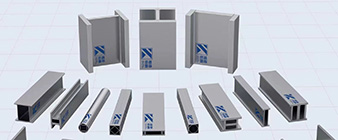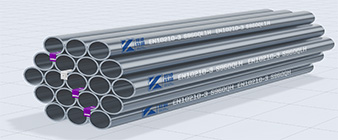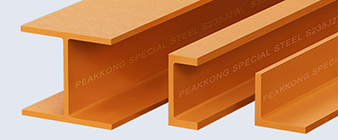When the laser power density reaches a certain value, the temperature of the workpiece surface rises rapidly in a short period of time and reaches its boiling point, causing the metal to vaporize and form an elongated hole. When the metal vapor recoil pressure, liquid metal surface tension, gravity, etc. reach a balanced value, the slender hole no longer continues to deepen, and finally forms a hole with stable properties, temperature, and depth. When the small hole is closed, the weld is formed. , to achieve laser self-fusion welding.
- Laser beam using 20kW laser;
- High-power diode laser is the ideal beam source for laser hybrid welding;
- Three-dimensional welding is formed in one go, with beautiful welds and small deformation;
- Fiber lasers are highly integrated with industrial robots, enabling flexible processing of complex and large workpieces.
| Laser power | 20KW |
| speed | 3.5m/min |
| Material | 304、316 |
| Plate thickness | <3mm |
-
Beautiful welds
The autogenous welding process is less likely to produce inconsistent or uneven weld bead patterns.
-
Less post-grinding requirements
Since no material is added during the autogenous welding operation, there is no excess material that needs to be removed from the welded parts.
-
Reduce material costs
Since autogenous welding operations do not require fillers, material costs are lower.
-
More suitable for thin materials
Autogenous welding is suitable for welding thin plates as it allows easy control of heat, bead profile and arc start/stop.
-
 2024-9-29 What are the typical applications of Alloy 59 / 2.4605 nickel-based alloy hollow structural profiles?
2024-9-29 What are the typical applications of Alloy 59 / 2.4605 nickel-based alloy hollow structural profiles? -
 2024-9-25 1.459 Super Stainless Steel Structural Profiles
2024-9-25 1.459 Super Stainless Steel Structural Profiles -
 2024-9-16 What are the typical applications of S32205 (2205) and UNS S31803 (2203) duplex stainless steels?
2024-9-16 What are the typical applications of S32205 (2205) and UNS S31803 (2203) duplex stainless steels? -
 2024-7-10 S960 Steel Laser Welding
2024-7-10 S960 Steel Laser Welding -
 2023-7-25 What is Corten steel?
2023-7-25 What is Corten steel? -
 2024-9-21 S690QH/S690QLH Hollow structural Stations in Hong Kong
2024-9-21 S690QH/S690QLH Hollow structural Stations in Hong Kong -
 2024-9-29 Alloy 602 CA / 2.4633/N06025 Nickel-based alloy structural profiles for beams and columns
2024-9-29 Alloy 602 CA / 2.4633/N06025 Nickel-based alloy structural profiles for beams and columns



